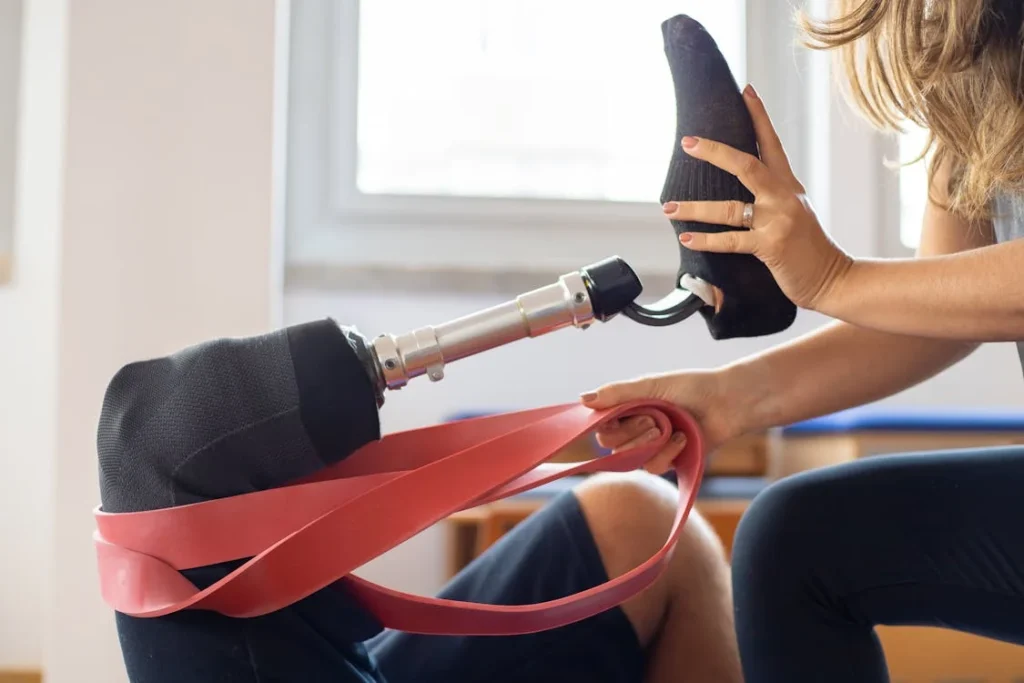For people using a prosthetic limb, daily comfort doesn’t come from high-tech parts or fancy designs. It starts with the one piece that touches the body all day, every day—the socket. This is the part of the prosthesis that fits over the residual limb. It may look simple from the outside, but it plays the biggest role in how the limb feels, how long it can be worn, and how safe it is for the skin.
When the socket fits just right, it holds the limb gently but firmly. It moves with the body, not against it. And most importantly, it keeps the skin protected. A bad socket, on the other hand, can turn every step into a struggle. It can lead to sharp pain, deep pressure sores, and long-term damage to the skin and tissue. In severe cases, it can even force someone to stop using their prosthetic limb altogether.
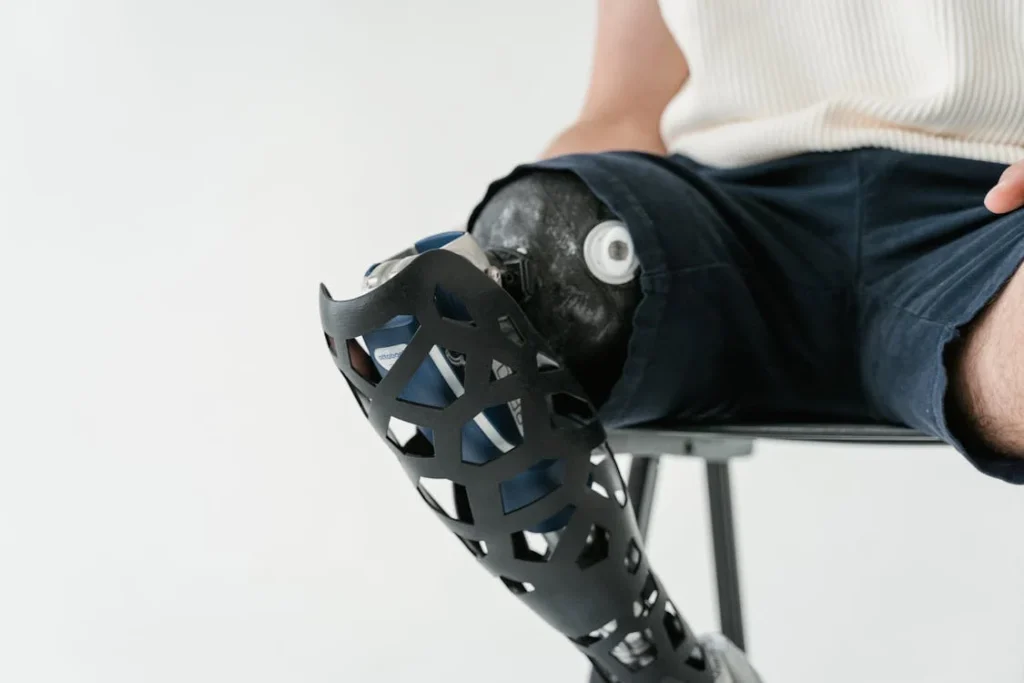
Why Socket Fit Matters More Than You Think
A prosthetic limb is not just a tool—it becomes part of someone’s body. That means every surface that touches the skin needs to be designed with care. The socket, which connects the body to the prosthesis, is the most personal and sensitive part.
When the fit is right, the user can wear the limb for hours, walk with confidence, and forget it’s even there. But when the fit is wrong, problems begin to build—and they build quickly.
The Body and the Socket: A Close Relationship
The residual limb is a living, breathing part of the body. It has skin, nerves, blood vessels, bone, and muscle. All of these are sensitive to pressure, friction, and heat.
When a socket fits poorly, it can cause pain within minutes. That pain might start small—just a dull ache or a bit of redness. But if ignored, it grows into something far more serious.
A tight socket might cut off circulation, which reduces oxygen to the skin and leads to pressure sores. A loose socket might rub back and forth, causing blisters that break open.
A hard socket edge that digs into the skin can break the surface and cause infections. And once the skin is damaged, healing is slow—especially in people with conditions like diabetes or poor circulation.
This is why getting the socket right is not just about comfort. It’s about safety and health.
Understanding Pressure Sores and Skin Breakdown
Pressure sores—also known as pressure ulcers—are injuries that form when constant pressure cuts off blood supply to the skin. Over time, the tissue begins to die.
These sores usually form in areas where the socket presses against a bony part of the limb, such as near the knee, shin, or end of the residual limb. They may start as just a red patch. But if the pressure continues, that red patch becomes purple. The skin breaks open. The area becomes sore, swollen, and hot.
Skin breakdown doesn’t stop there. In some cases, the damage goes deeper—into the muscle, or even down to the bone. This kind of injury is not only painful, it can also force someone to stop wearing their prosthesis.
It may require hospital treatment, surgery, or long recovery times. That’s why prevention is so important. And prevention starts with the right fit.
When the socket is designed to distribute pressure evenly, these high-risk spots are protected. The load is spread over a wider area. The skin gets proper blood flow. The limb feels supported, not squeezed. And that means fewer sores, fewer infections, and better overall health.
Pain Is a Warning Sign, Not a Normal Feeling
Many users believe that some pain is just part of wearing a prosthetic limb. They expect their skin to hurt after walking or their muscles to ache after standing. But pain is not normal. It’s a sign that something is wrong—especially when it’s caused by the socket.
Some people feel a sharp, pinching pain every time they step. Others get a burning sensation that doesn’t go away. Some feel pressure that gets worse the longer they wear the limb.
All of these are red flags. They signal that the socket is either too tight in some areas, too loose in others, or shaped in a way that doesn’t match the natural shape of the limb.
The good news is that all of these issues can be fixed with a better-fitting socket. By adjusting the shape, material, or padding, we can relieve the pressure, stop the rubbing, and help the body move naturally again.
Pain should never be accepted as “just part of it.” A comfortable socket allows people to walk, work, and live without constantly thinking about their limb. That’s the goal we aim for with every user.
Daily Wear and the Danger of Repeated Stress
Wearing a socket isn’t like trying on a shoe for an hour or two. Most users wear their prosthetic limbs for 10 to 14 hours a day, every day. That means the skin and tissues inside the socket are under constant pressure.
Even small problems—like a rough edge or a slightly tight band—can become major issues over time.
Think of it like a small pebble in your shoe. At first, it’s annoying. Then it starts to hurt. By the end of the day, you’re limping. The next day, there’s a blister. And a few days later, that blister is infected.
The same thing happens with a socket. If it’s not fitted well, the constant pressure and movement will wear the skin down. And because the prosthesis is used daily, the skin doesn’t get time to rest or recover.
This is why we design sockets not just for the first day, but for every day. We think about long-term wear. We study how the limb moves throughout the day—while walking, sitting, bending, or standing.
We build in flexibility where needed, support where it matters most, and softness in the most sensitive spots.
The result is a socket that can be worn for hours without pain or injury. It’s not just about surviving the day. It’s about living it fully.
How a Good Fit Protects the Skin
At Robobionics, we’ve worked with thousands of users across India, each with a unique limb shape, skin type, and lifestyle. What we’ve learned is simple but powerful: when the socket fits well, the skin stays healthy.
We design every socket with pressure relief in mind. We identify bony areas that need extra space. We find soft tissue zones that can carry more load.
We test how the socket holds during movement—so it doesn’t slip or dig in. And we use materials that breathe, wick moisture, and reduce heat.
This careful approach prevents pressure sores before they start. It keeps the skin clean, cool, and supported. And it means fewer medical issues, fewer clinic visits, and more time doing the things that matter.
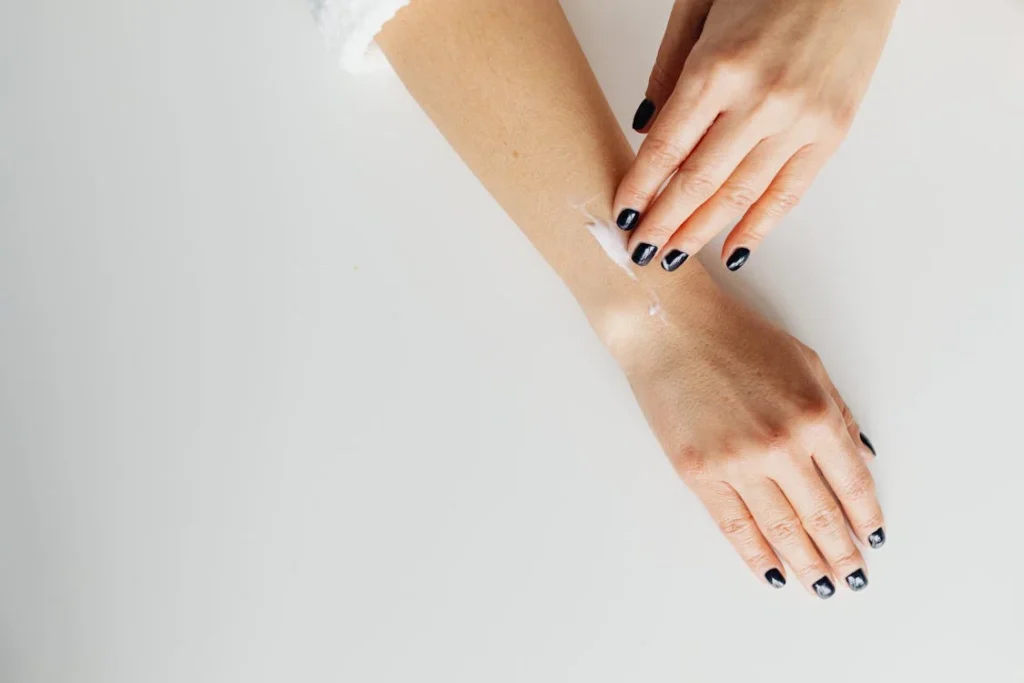
The Link Between Socket Fit and Skin Health
The skin on the residual limb is under constant pressure, friction, and temperature changes every day. Even healthy skin, when stressed continuously, can start to show signs of damage.
Now imagine how that stress feels when the socket isn’t shaped right or doesn’t support the limb the way it should. That’s when things like chafing, swelling, blisters, and wounds begin to appear. And for many prosthetic users, once skin problems start, it’s hard to get them to stop—unless the root cause is fixed.
How Friction Damages the Skin
Friction happens when the socket moves slightly against the skin while walking or shifting weight. In a loose-fitting socket, this movement might be very small—but over hundreds of steps in a day, it adds up.
Friction rubs away the top layer of skin. It can lead to redness, raw patches, and eventually open wounds.
In some cases, friction causes a buildup of thick, hard skin known as callusing. While calluses may seem like protection at first, they’re often a warning sign.
Underneath a callus, the skin may be breaking down without the user even realising it. If the socket continues to move against the same spot, the area becomes vulnerable to cracks, infections, and even deep ulcers.
A well-fitted socket reduces friction by hugging the limb closely without being tight. It stays in place. It doesn’t shift or slide. Instead of dragging across the skin, it moves with the body. That simple difference protects the skin over time.
Managing Heat and Moisture
Inside a socket, things can get hot quickly—especially in India’s warm climate. Heat leads to sweat. Sweat leads to moisture. And when the skin stays damp, problems arise.
Moisture softens the skin and makes it easier to break. It also creates a perfect environment for bacteria and fungus to grow. These microbes can cause rashes, itching, infections, and even unpleasant smells.
Some prosthetic users try to solve this by wearing extra socks or liners. Others clean the socket more often or try powders. But these are temporary fixes. The real solution lies in the socket design itself.
At Robobionics, we choose materials that allow the skin to breathe. We use liners that wick sweat away from the skin. And we add air flow channels when needed.
In some sockets, we also use antibacterial fabrics that reduce the chance of infection. These features may seem small, but together they make the inside of the socket a much safer place for the skin.
The Risk of Skin Breakdown in People with Diabetes
People with diabetes face a higher risk of skin problems, especially on their feet and limbs. Their circulation is often poor, which means the skin doesn’t get enough oxygen.
Their nerves may be damaged, so they don’t feel pain in the same way. This combination makes it easier for small injuries to go unnoticed—and harder for those injuries to heal.
For a prosthetic user with diabetes, a bad socket fit can lead to serious complications. A tiny blister can turn into an infected wound in just a few days. And because they may not feel the pain clearly, they might keep walking on it until it becomes dangerous.
This is why socket fit is even more critical in diabetic users. We take extra steps to protect their skin. We add more cushion in high-risk areas.
We avoid tight spots that could cut off circulation. And we make sure the socket shape allows the limb to sit comfortably without any pressure spikes.
We also educate users with diabetes on how to check their skin daily. With the right socket and the right care, we help prevent problems before they begin.
How Proper Alignment Supports Healthy Skin
When people think of socket fit, they often focus only on shape and size. But alignment—the way the socket holds the limb in relation to the rest of the body—is just as important.
Poor alignment can cause uneven pressure on the limb. One area might be squeezed while another is loose. This leads to unstable walking and constant shifting inside the socket.
Over time, this imbalance affects not just the skin, but the joints, the back, and the user’s overall posture. It can also cause certain skin areas to carry more load than they should, leading to sores or thickened tissue.
At Robobionics, we use detailed alignment techniques during socket fitting. We look at how the person walks, stands, and even sits. We test different angles and heights to make sure the load is spread properly.
The result is a socket that doesn’t just fit—it supports the entire body in motion. And that’s one of the most powerful ways to protect the skin and avoid breakdown.
Early Signs You Should Never Ignore
Even the best socket may need adjustments over time. That’s why knowing what to watch for is so important. If a user notices redness that doesn’t go away after removing the socket, that’s a warning sign.
If a certain spot always feels sore at the end of the day, the socket might be pressing too hard there. If there’s a small blister, it needs to be treated before it becomes a wound.
Sometimes the signs are more subtle. If the user starts limping, avoids putting full weight on the prosthetic, or takes it off more often, the socket may no longer be fitting right. These changes should never be ignored. They’re the body’s way of saying something needs attention.
We always encourage our users to come in for a review if something doesn’t feel right. Adjustments are part of the process. A socket that fit perfectly a year ago might need minor changes today. The earlier we make those changes, the easier it is to prevent pain, sores, and injury.
Why Prevention Is Always Better Than Treatment
Skin problems can be hard to heal—especially when they’re in a place that gets constant pressure. That’s why we focus on preventing issues before they start.
A few extra hours of fitting. A few more check-ins. A little more listening. These steps save our users from months of pain and healing later.
It’s not just about fixing a problem. It’s about avoiding it completely.
At Robobionics, we treat every socket as a tool for healing—not harm. When we get the fit right, we don’t just prevent damage. We give the user a chance to live fully, safely, and with complete confidence in their prosthesis.
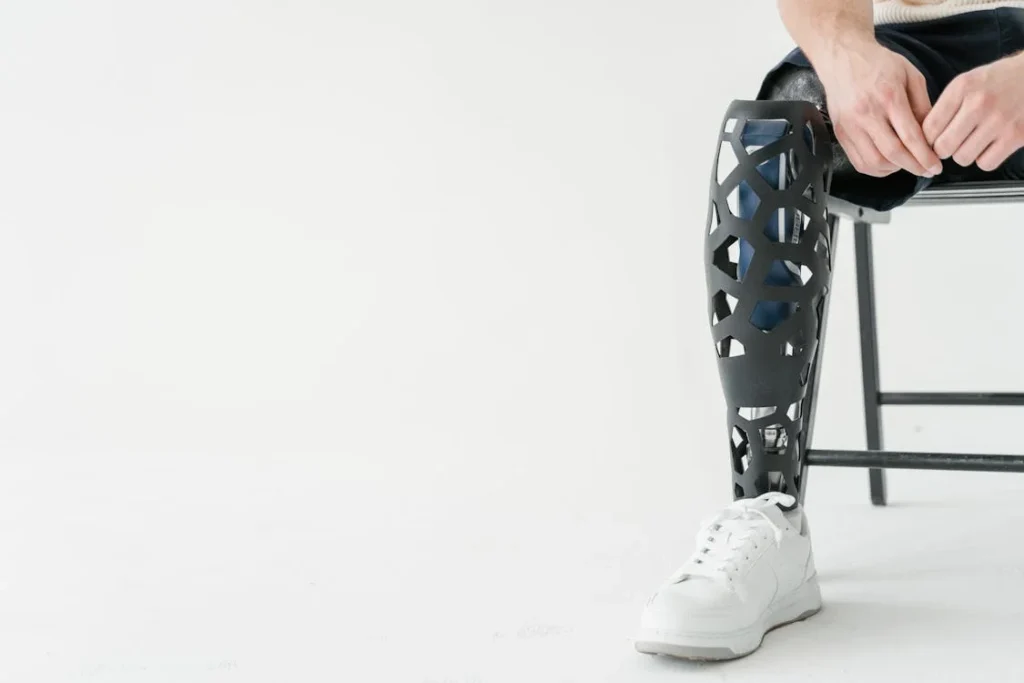
The Process Behind a Well-Fitted Socket
Getting a socket to fit perfectly is not something that happens by chance. It takes skill, careful planning, and close attention to detail. Every limb is different. Every person moves in a unique way.
That’s why, at Robobionics, we treat each socket fitting as a personalised project. The process is as much about listening as it is about measuring. It starts with the individual and ends with a socket that feels like it was made just for them—because it was.
The First Step: Understanding the User
Before we touch any tools or equipment, we sit down with the user. We talk. We ask about their daily life—what kind of work they do, how far they walk, whether they stand for long hours or do physical tasks.
We ask about their past experiences with prosthetics, especially any pain or discomfort they’ve had. This conversation tells us more than any scan or measurement ever could. It helps us understand the expectations and goals of the user. It also highlights the problem areas we need to pay close attention to.
This early step builds trust. It shows the user that we’re not just focused on the prosthetic—we’re focused on them. And it ensures that what we build will match not just their limb, but their lifestyle.
Capturing the Shape of the Limb
Once we have the information we need, we move on to capturing the exact shape of the residual limb. This step is crucial. Even a small mistake here can lead to pressure spots or poor balance later.
Traditionally, this is done using a plaster cast that wraps around the limb and hardens to form a mould. At Robobionics, we also use 3D scanning.
This newer method creates a digital image of the limb that is incredibly detailed. It picks up curves, dents, scar tissue, and any other shape features that need to be considered.
Whether we use plaster or digital tools, the goal is the same: to create a precise base for the socket design. This ensures that when the user wears the socket, it feels snug, balanced, and stable.
Designing with Pressure in Mind
Once we have the limb’s shape, we move on to designing the socket. This is where science and experience come together. It’s not just about copying the limb shape into a hard shell.
It’s about redistributing pressure so that sensitive areas are protected and stronger areas carry more load.
We carefully adjust the inner shape of the socket to avoid pressure on bones, scars, or tender skin. We add small contours where needed to hold the limb securely without creating pinch points.
We think about where the user’s weight will fall during walking, sitting, or standing—and we design accordingly.
For users with special needs, like those with diabetes or vascular conditions, we build in extra precautions. We make sure the socket holds the limb gently, with no sharp edges or tight zones.
And we often include soft liners or flexible materials to cushion the skin and allow for daily movement.
Testing and Refining the Fit
The first socket is never the final one. Once it’s built, we move on to testing. The user tries it on, walks a few steps, and tells us how it feels. We look for signs of pressure or discomfort.
We check the skin afterward for redness or irritation. We may ask the user to wear the socket for a few hours and then come back with feedback.
This back-and-forth is a critical part of the process. It allows us to fine-tune the fit—shaving a little off here, softening a curve there—until everything feels right.
Sometimes, we create a test socket made of clear plastic. This lets us see exactly how the limb sits inside and where adjustments need to be made.
The clear socket makes it easier to see skin contact, pressure zones, and gaps. It gives both us and the user confidence before the final socket is built.
Finalising the Socket
Once the test phase is complete and both the user and our team are satisfied, we move on to making the final socket. We choose the right materials based on the user’s needs—rigid for those who walk long distances or carry weight, more flexible for those who need comfort above all else.
We also pay attention to how the socket connects to the rest of the prosthesis. The alignment must be perfect. The angle, height, and position all affect how the person walks.
If the socket is even a little off, it can lead to limping, back pain, or imbalance. That’s why we check everything carefully before sealing the final design.
Beyond Fit: A Socket That Feels Like Part of You
The best socket is the one the user forgets they’re wearing. It doesn’t cause pain. It doesn’t rub. It doesn’t shift out of place. It just fits.
That kind of comfort doesn’t come from luck. It comes from a deep process, one that respects both the science of prosthetics and the experience of the person who wears them.
At Robobionics, we believe that a socket isn’t just a shell. It’s the foundation of movement, comfort, and safety. It’s what makes the difference between using a prosthetic because you have to and wearing one because you want to.
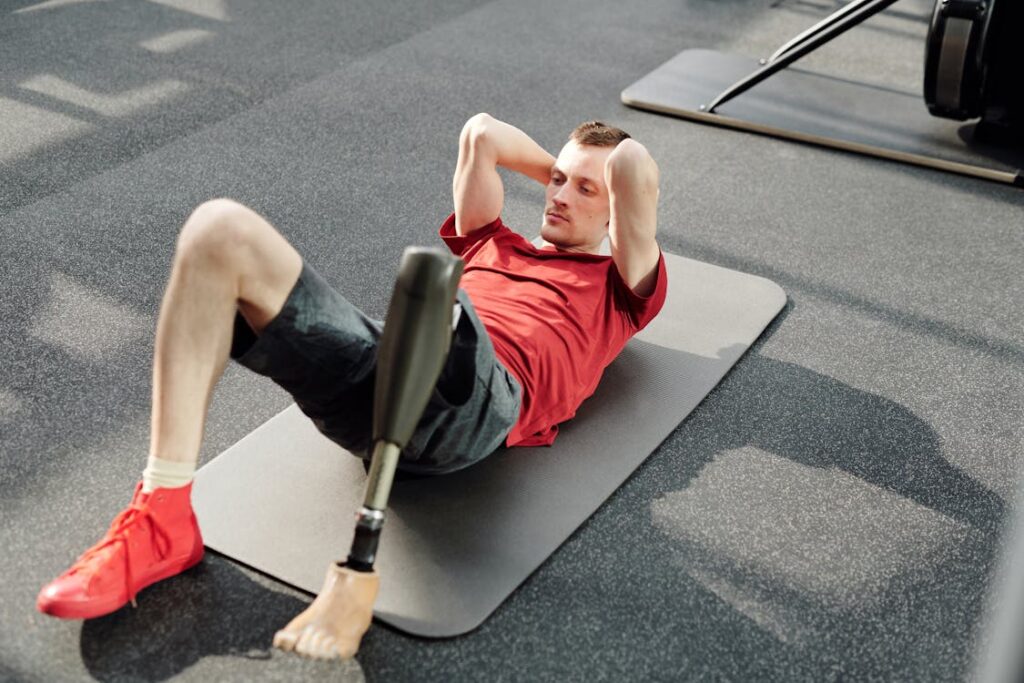
How a Good Socket Design Supports Movement and Prevents Injury
A prosthetic limb should do more than help someone stand. It should help them move freely—walk, bend, sit, climb, and even run—without fear of injury or discomfort. But this kind of freedom is only possible when the socket fits correctly.
Movement isn’t just about the leg or arm. It’s about the entire body working in balance. And when the socket isn’t designed to match the user’s natural motion, that balance breaks down.
Movement Begins at the Socket
Every step starts with the socket. When someone takes a step, the pressure shifts from heel to toe, and the body transfers weight through the socket to the rest of the prosthetic.
If the socket doesn’t match the shape of the limb properly, this shift becomes uneven. The limb may move inside the socket or press against the wrong area. Over time, this causes pain, joint stress, and muscle fatigue.
With a well-fitted socket, the body moves naturally. The weight is spread evenly. The socket follows the limb, not fights against it. Users find that they can walk longer, move faster, and do everyday tasks without thinking twice about their limb.
That’s because a good socket isn’t passive—it’s active. It works with the body, not against it.
Preventing Overuse and Strain
When a socket causes discomfort, users start to compensate. They might shift their weight to the other leg. They may lean their body slightly to avoid pressure.
Or they may take smaller steps to reduce rubbing. These small changes might help in the short term, but over weeks or months, they create bigger problems.
Overcompensation puts stress on muscles and joints that shouldn’t be working so hard. It leads to back pain, knee problems, hip misalignment, and even headaches. It can also affect posture, gait, and energy levels.
We’ve seen users who, after months of living with a poorly fitted socket, began to develop issues in parts of the body far from the limb itself.
Some even thought the problem was with their bones or muscles—until they received a socket that truly fit. Once that happened, the pain disappeared almost immediately.
This shows just how deeply connected the socket is to whole-body health. A small fix in the socket design can prevent long-term strain throughout the body.
Balance and Stability on Uneven Ground
In many parts of India, roads and walkways are uneven. People walk on gravel, dirt, stairs without railings, and narrow footpaths. For a prosthetic user, especially one with a lower limb amputation, balance is everything.
A socket that fits poorly can feel wobbly. It may slip slightly when walking on an incline. It may press too hard on one side when going down stairs.
This instability makes users nervous—and that nervousness changes how they walk. Instead of moving confidently, they take shorter, slower steps. They look down constantly to check their footing. And often, they avoid going out altogether.
When the socket is stable, everything changes. Users walk with more trust in their limb. They can walk on uneven paths, climb stairs, and go about their day without needing to stop and readjust.
They feel safe—and that feeling of safety leads to more movement, better health, and greater independence.
Supporting Muscle Activity and Joint Motion
Muscles don’t just move the body—they keep it strong. For people who use prosthetics, keeping the muscles around the residual limb active is vital.
These muscles support the socket, help with balance, and prevent weakness over time. But if the socket is shaped poorly, it can actually stop these muscles from working correctly.
Some sockets are too tight in certain areas, which cuts off muscle activity. Others are too loose, causing the limb to move awkwardly inside. Both issues limit motion and reduce the user’s ability to stay strong.
A well-designed socket allows muscles to contract and relax naturally. It gives them room to move while still providing support. It also holds the limb in a position that encourages proper posture and alignment.
This kind of support isn’t obvious at first—but over time, it keeps the body stronger, steadier, and more resilient.
Customisation for Different Movement Needs
Not every user moves the same way. Some work in offices, walking short distances and sitting most of the day. Others are farmers, teachers, labourers, or shopkeepers who stand and move for hours. Some want to jog or hike. Others just want to walk without pain.
This is why socket design must match the user’s daily activity—not just their body shape. At Robobionics, we design sockets based on real-life movement.
We ask where the user goes every day, how much they walk, and what kind of surfaces they deal with. We look at whether they squat, climb, or need to shift weight often. This information shapes how we build their socket.
For someone who sits a lot, we make sure the socket is cut to allow comfort behind the knee or under the thigh. For someone who lifts, we provide stronger support around the limb.
For someone who wants to jog, we choose materials that absorb shock and resist movement inside the socket.
These custom changes create a better experience every day—not just when the limb is new, but for months and years to come.
Avoiding Falls and Building Confidence
Fear of falling is one of the biggest reasons prosthetic users hesitate to move freely. When they feel unsure about their limb, they slow down.
They avoid crowds. They stay indoors. This fear often comes from instability in the socket—when it shifts, pinches, or doesn’t hold the limb securely.
A socket that’s stable and balanced removes that fear. It holds the limb like a second skin. It moves with the body, not apart from it. Users walk taller. They stop looking down all the time. They trust their movements again.
That trust grows into confidence. And confidence is what makes the difference between surviving and thriving.
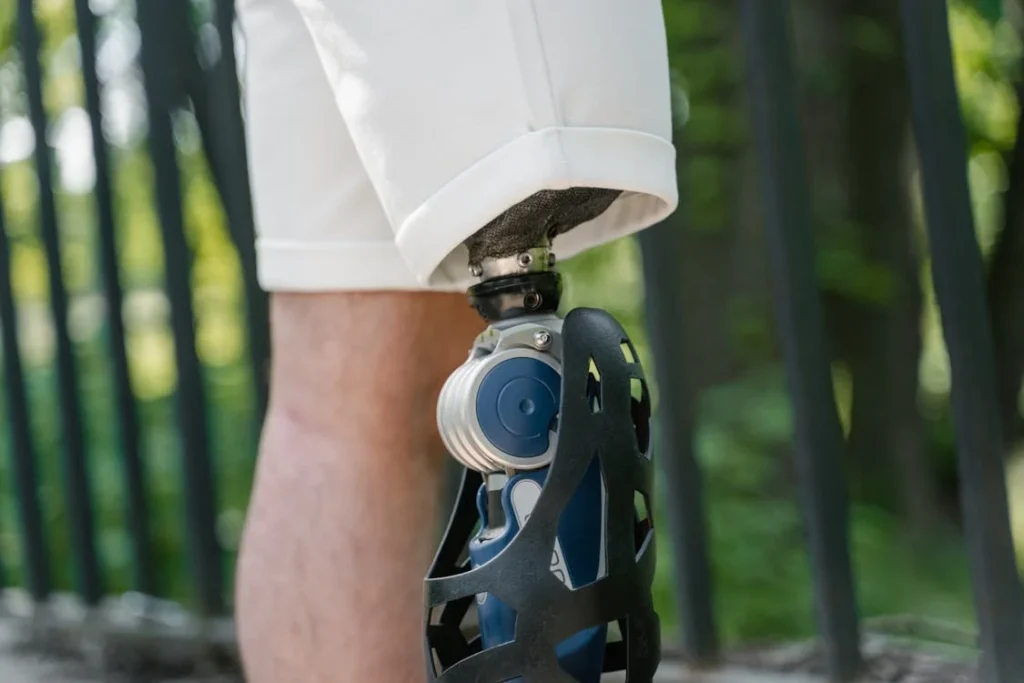
Long-Term Comfort, Health, and Independence
When someone receives a prosthetic limb, the journey doesn’t end with walking again. It begins with learning how to move with comfort, to stay active without injury, and to trust the prosthesis like a part of their own body.
That long-term success depends on many things—proper rehabilitation, good health, regular follow-ups—but the one thing it always comes back to is the socket.
A poorly fitted socket isn’t just a discomfort today. It becomes a serious health risk tomorrow. It can cause damage to the skin, pressure sores that take weeks to heal, and muscle weakness from misalignment. It can lead to lost work days, emotional stress, and even a return to crutches or wheelchairs.
But when the socket fits properly, everything changes. Movement becomes easier. Pain fades. The skin stays healthy. And the person begins to live life fully again—not as someone recovering from limb loss, but as someone confidently moving forward.
At Robobionics, our goal isn’t just to build prosthetics. It’s to restore movement, comfort, and dignity. That begins with taking the time to understand each person, to carefully design a socket that matches their limb and lifestyle, and to support them every step of the way.
We treat every socket like it matters—because to the person wearing it, it does.
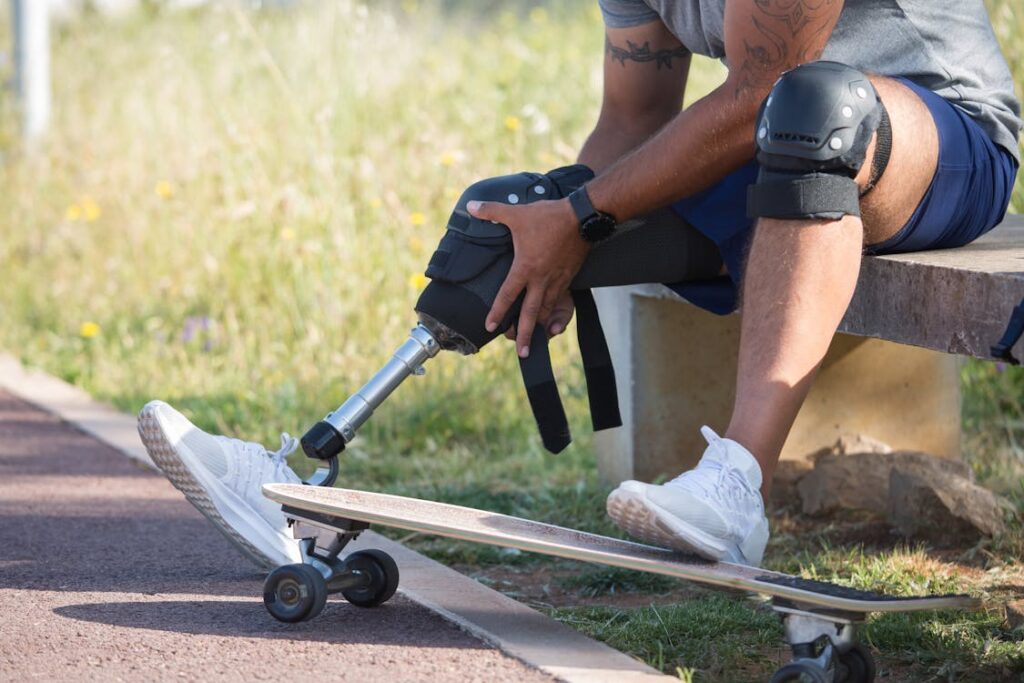
Conclusion
Most people don’t notice a socket when they look at a prosthetic limb. It’s hidden under clothing or behind a sleek outer shell. But ask any user, and they’ll tell you—it’s the part that matters most. A well-fitted socket is more than a technical achievement. It’s a shield against pain. It’s a tool for stability. It’s a pathway to freedom. It prevents pressure sores, protects the skin, and lets the user walk, work, and live without fear.
This isn’t about perfection. It’s about care. Precision. Listening. And designing with purpose. At Robobionics, we believe that every person deserves a socket that feels like a natural extension of their body. Because when the socket fits, life fits better too.



